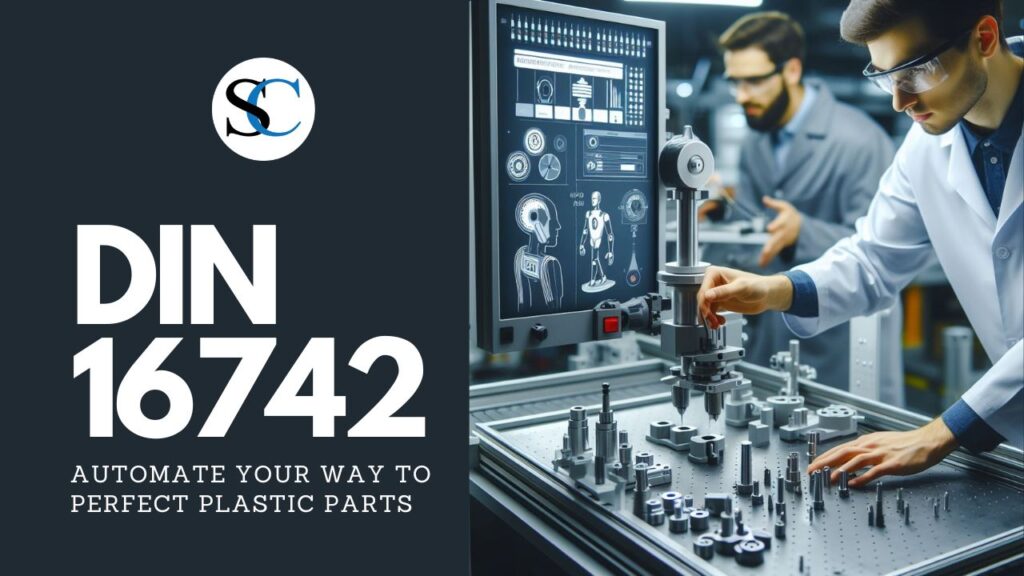The quest for flawless plastic parts in manufacturing can feel like an endless pursuit. Inconsistencies creep in, jeopardizing dimensional accuracy and casting a shadow over the quality of your final product. But there’s a secret weapon waiting to be unleashed: DIN 16742. This game-changer can revolutionize your approach to plastic parts and propel you towards automation.
What is DIN 16742 and Why Does It Matter?
DIN 16742 is more than just a standard; it’s a roadmap to precision. It establishes a system of tolerances, which are the acceptable ranges of variation in a part’s dimensions. By adhering to these guidelines, manufacturers can guarantee that every single plastic part leaving the assembly line is identical to the last, eliminating inconsistencies and ensuring a perfect fit.
The Magic of Automation: Streamlining Perfection
The true power of DIN 16742 lies in its potential for automation. Integrating the standard’s principles into your design and manufacturing software creates a streamlined workflow that minimizes human error and maximizes efficiency. Imagine software that automatically flags design elements that fall outside DIN 16742 tolerances, preventing issues before they even arise.
This automation extends beyond design. Manufacturing equipment can also be programmed to adhere to DIN 16742 specifications. Injection molding machines, for instance, can be calibrated to deliver precise melt pressure and cooling parameters, ensuring parts emerge from the mold with consistent dimensions.
Reaping the Rewards of Automation and DIN 16742
Embracing DIN 16742 and automation unlocks a treasure trove of benefits:
- Reduced Waste: Fewer imperfections translate to fewer rejects, saving you money on wasted materials and minimizing your environmental footprint.
- Faster Production: Automated processes streamline production, accelerating turnaround times and boosting your output. This allows you to meet tighter deadlines and capitalize on new market opportunities.
- Enhanced Quality: Consistent precision translates to superior quality parts that meet exact specifications, reducing the risk of product failure and enhancing customer satisfaction.
- Lower Costs: Reduced waste, faster production, and fewer errors all contribute to significant cost savings, improving your bottom line and allowing you to invest in further innovation.
- Global Acceptance: DIN 16742 is an internationally recognized standard, ensuring your parts are compatible for global markets, opening doors to new customer segments and expanding your reach.
Getting Started: Your Path to Perfect Plastic Parts

Implementing DIN 16742 and automation might seem like a daunting task, but the initial investment pales in comparison to the long-term rewards. Here’s a roadmap to get you started on your journey towards perfect plastic parts:
1. Knowledge is Power: Familiarize Yourself with DIN 16742
Invest time in understanding the standard’s core principles, tolerance specifications, and how they apply to your specific products. Numerous resources available online and through industry associations offer in-depth explanations and training materials.
2. Software Selection: Choose the Right Tools for the Job
Upgrade your design and manufacturing software to leverage the power of DIN 16742. Look for software that seamlessly integrates DIN 16742 functionalities. These might include automated tolerance checks during the design phase, material selection recommendations based on DIN 16742 compliance, and direct integration with manufacturing equipment for real-time parameter adjustments.
3. Automation Audit: Identify Opportunities for Improvement
Identify areas in your workflow where automation can be implemented to ensure adherence to DIN 16742. This could involve automating repetitive tasks such as data entry, machine calibration, or quality control checks. Consider consulting with automation specialists to explore advanced solutions like robotic part handling or automated visual inspection systems.
4. Empowering Your Team: The Human Touch in Automation
Don’t underestimate the importance of your team. Educate them on the significance of DIN 16742 and empower them to leverage automation tools effectively. Provide training on interpreting DIN16742 specifications, using design software with integrated automation features, and monitoring automated processes. Fostering a culture of quality and embracing continuous improvement will equip your team to navigate the future of plastic parts manufacturing.
Conclusion: The Future of Plastic Parts Manufacturing is Here
DIN16742, coupled with the power of automation, is the key to unlocking a new level of precision and efficiency in plastic parts manufacturing. Embrace this future-proof approach, and watch your business soar to new heights, leaving behind the days of inconsistencies and imperfections. As you embark on this journey, remember that continuous evaluation and refinement are key. By constantly monitoring your processes, identifying areas for further improvement, and adapting your approach as needed, you can ensure that your automation efforts deliver the maximum return on investment.





